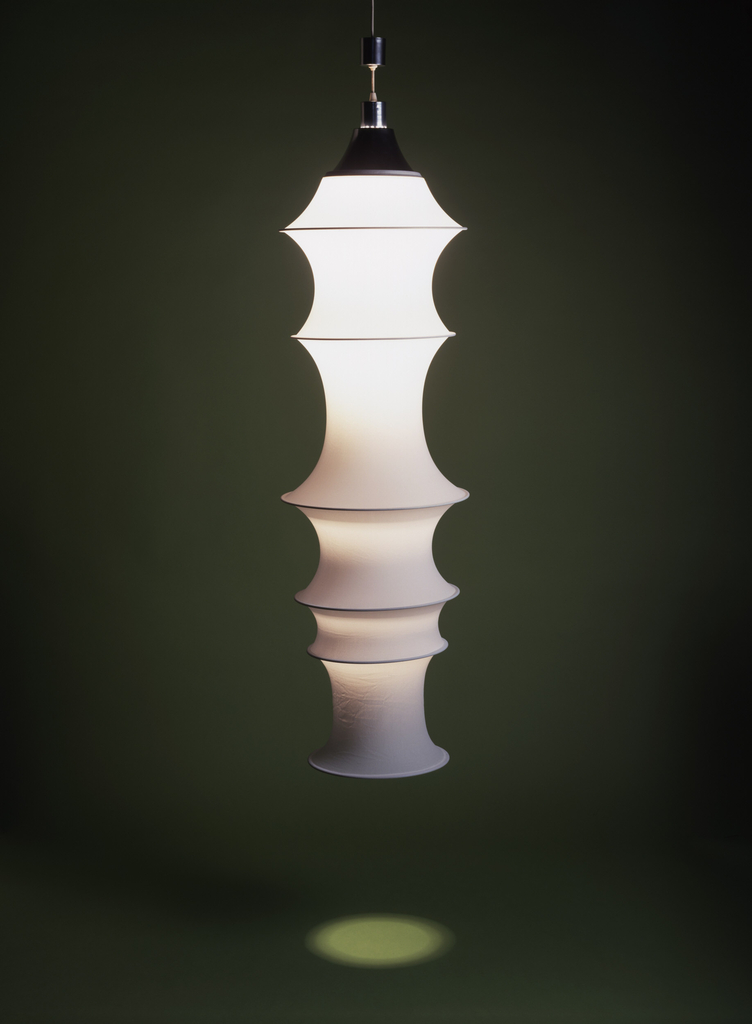Electric lighting has existed since the late nineteenth century. Some of the earliest forms exhibited fine Art Nouveau-era workmanship, while decadent Art Deco forms arose in the mid-1920s. A functional, industrially-inspired modernist aesthetic grew in popularity from the 1930s onward. But to my mind, the 1960s was a time of some of the most inventive and clever lighting design, especially for home interiors. Looking to developments in new synthetic materials, and inspired by the post-war economic boom and a growing emphasis on youth, a casual lifestyle, and popular culture, designers and manufacturers were creating aesthetically groundbreaking forms.
The versatile Bruno Munari, a self-trained artist, theorist, graphic and product designer, and creator of children’s games and books, was one of the earliest designers to work with industry to create products that combined a playful sense of art with utility. His Falkland pendant lamp of 1964 is as sculptural as it is functional. The long, undulating form is composed of a short conical aluminum housing for the light source, from which hangs a simple tube of stretch fabric over horizontal rings of different diameters. The rings are spaced at varying intervals to create a sense of visual rhythm. The lamp, stretched like a stocking by gravity and tension, becomes a luminous focal point in a room, the degree of light intensity and shadow slightly different in each curvaceous segment. According to Munari, he had been contemplating flexibility as a component of objects, and eventually visited a hosiery factory to see if they could fabricate a lamp. He was told they did not make lamps. His reply: “Oh but you will.…”
The lamp was practical in terms of storage and portability too: the long, flexible structure could be collapsed for easy storage or transport, and simply pulled from its box, accordion-style, for installation. Munari believed in simplifying, rather than complicating, design.
Cynthia Trope is Associate Curator in the Product Design and Decorative Arts Department, Cooper Hewitt, Smithsonian Design Museum
